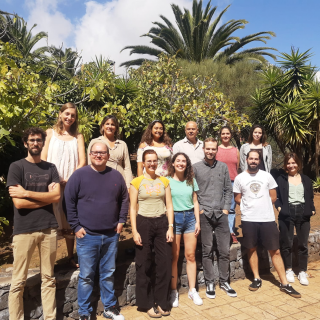Bibcode
Bidaran, Bahar; La Barbera, Francesco; Pasquali, Anna; van de Ven, Glenn; Peletier, Reynier; Falcón-Barroso, Jesus; Gadotti, Dimitri A.; Sybilska, Agnieszka; Grebel, Eva K.
Bibliographical reference
Monthly Notices of the Royal Astronomical Society
Advertised on:
11
2023
Citations
5
Refereed citations
5
Description
Using MUSE data, we investigate the radial gradients of stellar population properties (namely age, [M/H], and the abundance ratio of α elements [α/Fe]) for a sample of nine dwarf early-type (dE) galaxies with log(M⋆/M⊙) ~ 9.0 and an infall time onto the Virgo cluster of 2-3 Gyr ago. We followed a similar approach as in Bidaran et al. to derive their stellar population properties and star formation histories (SFHs) through fitting observed spectral indices and full spectral fitting, respectively. We find that these nine dE galaxies have truncated [Mg/Fe] versus [Fe/H] profiles than equally massive Virgo dE galaxies with longer past infall times. Short profiles of three dE galaxies are the result of their intense star formation which has been quenched long before their accretion onto the Virgo cluster, possibly as a result of their group environment. In the remaining six dE galaxies, profiles mainly trace a recent episode of star burst within 0.4Re which results in higher light-weighted [α/Fe] values. The latter SFH peak can be due to ram pressure exerted by the Virgo cluster at the time of the accretion of the dE galaxies. Also, we show that younger, more metal-rich, and less α-enhanced stellar populations dominate their inner regions (i.e. < 0.4Re) resulting in mainly flat ∇age, negative ∇[M/H], and positive ∇[α/Fe]. We find that with increasing log(σRe) of dE galaxies, ∇age and ∇[α/Fe] flatten, and the latter correlation persists even after including early-type galaxies up to log(σRe ~ 2.5), possibly due to the more extended star formation activity in the inner regions of dEs, as opposed to more massive early-type galaxies.
Related projects

Traces of Galaxy Formation: Stellar populations, Dynamics and Morphology
We are a large, diverse, and very active research group aiming to provide a comprehensive picture for the formation of galaxies in the Universe. Rooted in detailed stellar population analysis, we are constantly exploring and developing new tools and ideas to understand how galaxies came to be what we now observe.
Anna
Ferré Mateu